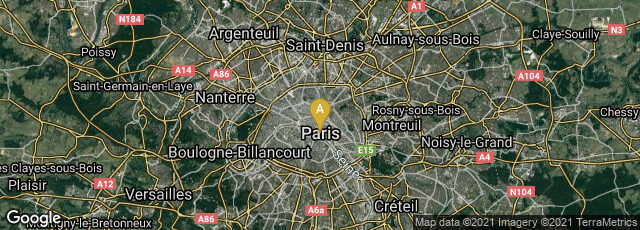

A: Paris, Île-de-France, France
Provenance: Jacques Auguste de Thou (1553-1617; signature on title and verso of final leaf) -- Jean-Jacques Charron, marquis de Ménars -- Armand-Gaston, cardinal de Rohan -- Charles de Rohan, prince de Soubise (shelfmark on pastedown). This copy sold at Christies, London for 8,125 GBP on June 16, 2015.
In 1586 French diplomat and cryptographer Blaise de Vigenère published in Paris Traicté des chiffres ou secrètes manières d'escrires. Vigenère's book described a text autokey cipher that became known as the Vigenère cipher because it was misattributed to Vigenère in the 19th century. The actual inventor of the text autokey cipher was Giovan Battista Bellaso (1563).
“Vigenère became acquainted with the writings of Alberti, Trithemius, and Porta when, at the age of twenty-six, he was sent to Rome on a two year diplomatic mission. To start with, his interest in cryptography was purely practical and was linked to his diplomatic work. Then, at the age of thirty-nine, Vigenère decided that he had accumulated enough money for him to be able to abandon his career and concentrate on a life of study. It was only then that he examined in detail the ideas of Alberti, Trithemius, and Porta, weaving them into a coherent and powerful new cipher … The cipher is known as the Vigenère cipher in honour of the man who developed it into its final form. The strength of the Vigenère cipher lies in its using not one, but 26 distinct cipher alphabets to encode a message… To unscramble the message, the intended receiver needs to know which row of the Vigenère square has been used to encipher each letter, so there must be an agreed system of switching between rows. This is achieved by using a keyword… Vigenère’s work culminated in his Traicté des Chiffres, published in 1586. Ironically, this was the same year that Thomas Phelippes was breaking the cipher of Mary Queen of Scots. If only Mary’s secretary had read this treatise, he would have knownabout the Vigenère cipher, Mary’s messages to Babington would have baffled Phelippes, and her life might have been spared” (Singh, The Code Book. The Secret History of Codes and Codebreaking, 46-51).
The Vigenère cypher was regarded as unbreakable for over 300 years, until Charles Babbage and Friedrich Kasiski independently developed a method of multiple tests to carry out successful cryptanalysis.
Leaves CCCXXVII-CCCXXXVI of Vigenère's work contain the first representations of Chinese and Japanese writing in a European printed book.
Galland, An Historical and Analytical Bibliography of the Literature of Cryptography, 193.